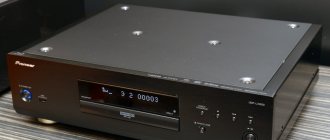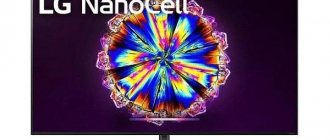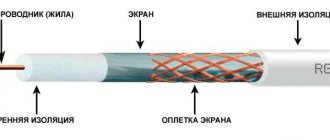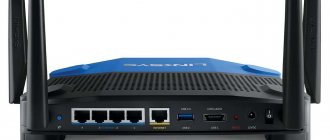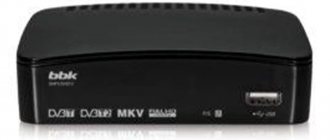What is NTSC?
So, many American video recording media are in NTSC format.
What it is? Today it is the color encoding system used by DVD players. Until recently, it was used by broadcast television in North America, Japan and much of South America. As color televisions began to replace black-and-white televisions, developers began using several different methods to encode color for broadcast. However, these methods conflicted with each other and with old black-and-white televisions, which could not interpret the color signals transmitted to them. In 1953, the National Systems Committee adopted the NTSC standard, which was developed and implemented as a single standard. From that moment on, it could be used throughout the country, as it became compatible with a large number of different TVs. Nowadays you can still find NTSC. What does it mean? Even though modern TVs no longer use this format, they can still receive and recognize it.
Selecting a Power Source
Most cameras are powered by 12 Volt DC - this is the first parameter by which you need to select a power source. Add up the current consumption of all your cameras, multiply by one and a half and you will get another power source parameter: maximum current. Current is measured in Amperes. If the power source produces more current, this is not bad, the main thing is not less. Some IP video cameras support the PoE power transmission standard - this can be seen in the camera characteristics. To connect them, you need PoE injectors or PoE switches. For a country house where power outages are possible, an uninterruptible power supply with a battery will be required. You should not save much on battery capacity - the operating time of the system during a power outage depends on it. The DVR kit includes a power supply. When reserving power, do not forget to provide power to the DVR. A good, but expensive solution is multi-channel uninterruptible power supplies with separate outputs for powering cameras and a DVR.
PAL or NTSC: which is better to use?
Many video editing programs, such as VideoStudio, allow you to choose what format to save your work in when burning to DVD.
Which format you should use mainly depends on your location. If you are creating videos that will be displayed around the world, NTSC by choice is safer and more comfortable. Most DVD players and other PAL-based devices can play NTSC video, but NTSC-based players usually do not support PAL.
Selecting video cameras
Manufacturers offer different types of video cameras based on the places of their use: outdoor for installation on the street, anti-vandal for installation in the entrance, or dome for indoors. If you need to record sound, use models with a built-in or remote microphone.
Video camera settings
The basic characteristics of video cameras are: lens focal length, image resolution and light sensitivity. Focal length directly affects the viewing angle of the lens. The larger it is, the smaller the camera's viewing angle will be. As a rule, a wide view is necessary indoors - video cameras with a short focal length are used there (
Difference of standards
PAL SECAM NTSC what is it? Each color rendering system offers a number of characteristics that affect compatibility and pairing:
- NTSC uses 525 lines of picture with a storyboard of 30 FPS. This need is due to the parameters of the US power grid - 230V and 60 Hz. The predominant colors are red and blue.
- PAL and SECAM work on the ATB color standard, which has 625 lines per frame. It is noteworthy that all of Europe uses 25 FPS, which are tied to the properties of the electrical network - 220V and 50 Hz. The main colors are red, green, blue.
The two video standards PAL and SECAM are compatible, but the standard differs significantly from NTSC, since the latter technically involves fewer cathode ray tubes transmitting primary color signals.
Watch your favorite movies and TV series on any device thanks to More TV for only 299 rubles per month. Don't miss out on your 7 days FREE subscription!
There were cases in the early 90s when color TVs displayed a black and white picture, due to:
- By watching analog TV on a recently purchased Japanese-made TV that only works with NTSC, which does not work in Europe and the post-Soviet countries.
- Watching video from cassettes on which the video track was recorded using the NTSC standard. As a result, this color rendition was not recognized by videocassette players in the USSR and Europe.
To eliminate this problem, it was necessary to additionally purchase a decoder and integrate it into the board of the picture playback device.
If you have a choice of PAL or NTSC, then definitely choose PAL to watch the remaining ATV in Russia.
Support
Attention! The color rendering standard is an image output technology, not a broadcast technology. It is used for ATV television broadcasting and color film editing.
Owners of color TVs and VCRs in the early 1990s often encountered a situation where only black and white images were displayed. This is due to the fact that the color rendering characteristics of the content source (broadcast or video cassette) do not match those of the image output device.
This only happens in two cases:
- When watching ATV. This situation arose when purchasing a Japanese-made TV exported from Western Europe or the USA. They only support NTSC format.
- When watching the VCR. Previously, pirated videotapes were often found on the domestic market. They often recorded films with the NTSC color rendering standard, which was not recognized by Soviet and European-made devices.
The whole reason is precisely the different technical characteristics of both European and American color rendering standards. The problem of combining both European formats was solved by adding a decoder to the board in old TVs and VCRs, which made it possible to obtain color images of the PAL and SECAM television standard.
The PAL system is not compatible with the American NTSC system, but the TV displays images in black and white. The reason is that such devices have 3 cathode ray tubes, which, accordingly, must receive a signal from three primary colors. ATV signal in PAL format is not recognized by NTSC TVs and vice versa.
Today, modern televisions can display color images of any format, and this problem is no longer relevant. Moreover, the user can change the color rendering using the usual settings for each physical channel.
Important! If a choice is made between PAL or NTSC, it is obvious that you need to purchase a European system device. Only it guarantees the output of color content of domestic and European broadcast programs.
Why are these formats still used?
The basic answer is that they are not today what they were originally created to be. It is clear that the technical problems that these coding systems were created to solve in the 1950s do not apply to the modern world. However, DVDs are still labeled as supporting NTSC or PAL (see above for which one to buy and why), and the timings, resolutions, and refresh rates set in these systems are still used in modern TVs and monitors.
The main reason for this is the regionalization of content. The use of different video formats acts as a layer of physical protection to strengthen national copyright laws, and prevent the distribution of films and television programs in different countries without permission. In fact, this is the use of formats as a legal method of copyright protection. This phenomenon is so common that distribution regions for video games and other interactive electronic media are often referred to as NTSC and PAL regions, although such software works fine on any type of display.
Selecting cables and connectors
Analog video cameras are connected to the DVR using a coaxial cable in a star configuration: a separate cable runs from each camera. For connection you will also need BNC connectors. Digital video surveillance systems can be connected using any topology; the signal is transmitted via Ethernet or WiFi.
The HD standard has the maximum signal transmission range: cameras can be connected to the recorder with a cable up to 500 meters long. The maximum of other standards is 100 meters.
The cameras are powered via a standard two-wire cable, and it is better to place the source as close as possible to the video camera. If the cameras in an analog set are located close to the DVR (up to 50 meters), use a combination cable to simultaneously transmit power and video signals.
NTSC or PAL for digital TV
After the 90s, color transfer systems were used:
- in cable, satellite and terrestrial television;
- to implement recordings on magnetic tapes;
Over time, data carriers were completely transformed, magnetic tapes were relegated to the shelf of “obsolete technologies”, where analog TV will soon be. After all, ATV is already being replaced by digital and interactive television on all fronts.
The digital era has come along with new standards. Now the picture in MPEG-4 is supplied separately from the sound. The use of PAL and NTSC standards is no longer necessary.
Essentially, the question of NTSC or PAL for digital TV is not posed correctly. The DVB-T/T2 tuner is responsible for digital playback. Analog signals are implemented by tuners that work with PAL, SECAM and NTSC. A modern TV may have several tuners. If you display analog and digital channels together on your TV, it is recommended to set the PAL/SECAM system for Russia.
Again, if you need to rewrite a movie on a laptop, converting it from digital format to magnetic tape for later viewing via TV / Monitor + VCR, then you may encounter these standards.
Selecting a DVR
A video recorder is a device that processes and records images from video cameras on a hard drive. The number of channels is usually equal to the number of video cameras, but it is better to take it in reserve to expand the system if necessary. Choose a DVR of the same standard as video cameras or pay attention to hybrid models - they support several standards at once (for example, Onvif, AHD and PAL).
DVR settings
Motion-based recording, which all DVRs are equipped with, significantly speeds up the search for the desired events and saves precious space in the archive. Among the useful functions, we also note the ability to connect external devices (for example, sirens), as well as e-mail notification in case of an alarm.
To connect and configure the DVR you will need a monitor or TV with an HDMI or VGA output. In the future, the system can be controlled remotely from a browser or through a mobile application. If you don’t want to deal with setting up remote access, pay attention to models that support cloud service (p2p). This service is especially relevant for dachas where there is no Internet access; In addition, you will definitely need a DVR with support for 3G modems or a separate 3G router.
PAL, NTSC formats: what is the difference from the technical side?
Televisions display their images line by line and create the illusion of movement by displaying them slightly altered, many times per second. The broadcast signal for black and white television simply indicated the brightness level at each point along a line, so each frame was simply a signal with brightness information for each line.
Initially, televisions displayed 30 frames per second (FPS). However, when color was added to widescreen broadcasts, black-and-white TVs could not distinguish color information from luminance information, so they attempted to display the color signal as part of the picture. As a result, it became meaningless, and the need arose to introduce a new TV standard.
To display color without this problem, the broadcast needed to add a second chrominance signal between the luminance signal fluctuations, which would become ignored by black-and-white TVs, and color devices would look for it and display it using an adapter called a Colorplexer.
Because this extra signal was added between each frame update, it increased the amount of time it took for them to change, and the actual FPS on the display was reduced. Therefore, NTSC TV plays 29.97 frames per second instead of 30.
In turn, a PAL signal uses 625 lines, of which 576 (known as a 576i signal) appear as visible lines on the TV, while a formatted NTSC signal uses 525 lines, of which 480 appear visible (480i). In PAL video, every second line has a phase change in the color signal, which causes them to equalize the frequency between the lines.
How to choose the right CCTV cameras
CCTV cameras are a certain type of device that allows you to obtain a video data stream used for further processing. Information from cameras can be viewed directly, which helps to provide ordinary video monitoring of the ongoing situation in the protected area.
Of course, to create full control of the entire facility, it is necessary to create a multifunctional security and video surveillance system, including ACS (access control system), fire alarm system (fire alarm security), video servers, video recorders, IT solutions for various industries, cameras of various types and much more.
The video surveillance system is created in order to become an indispensable assistant in achieving complete control by notifying about ongoing events in real time. The issue of creating the most efficient system should be approached with special responsibility, since the performance and durability of the entire system as a whole depends on the quality of the constituent elements.
Types of video cameras
One of the elements of the security and video surveillance system that we have to choose today is a video surveillance camera.
Different types of video cameras
What types of this device are presented on our market? Initially, it is worth saying that all cameras are divided into wired and wireless, then according to the type of output device into analog and digital.
- Analog camera is a video camera limited to an analog video signal broadcast standard corresponding to one of the television signal standards NTSC (in the USA), PAL (in most countries).
- A digital camera (IP camera) is a video camera that is a complete network device that has no restrictions on the ability to transmit information.
Basically, we can say that there are two main advantages of digital cameras over analogue ones. Firstly, it is the transfer of information in digital form. Transmitting video information in this form allows you to obtain high-quality video without various defects and distortions, which is usually typical for an analog video signal. Secondly, one of the big advantages is the resolution of the matrix used in the camera.
As mentioned above, the image resolution of an analog camera is limited by the television signal standard NTSC (in the USA), PAL (in most countries), so you can simply forget about megapixel image quality, the possible resolution of analog cameras is 704x576 or 768x576, frame rate is 30 or 25 Hz.
When using IP cameras you don’t have to think about this, there are no restrictions, the quality of the resulting image depends solely on the cost.
Types of analog and network video cameras
Today, there are many different models and classifications of video surveillance cameras; each customer can choose a camera that suits him to solve his goals and objectives.
- Modular cameras are a device created on the basis of one/two/three boards, equipped with a miniature lens size. Used for covert surveillance, they can also be used directly in the casing.
- Miniature video cameras have a square or cylindrical body. These cameras are a ready-made device that can be mounted inside a building. If saving space is a necessity for you, then this camera is exactly what you need. The camera can also be used in places where implicit surveillance is required.
- PTZ cameras are devices that capture images using a rotating mechanism that allows you to change the observation area. PTZ video cameras can be used when protecting particularly important objects where comprehensive surveillance is required. The built-in zoom allows you to zoom in on the image in a matter of seconds for the most complete understanding of the current situation. PTZ cameras can be programmed to view specific surveillance areas at specific times.
- Dome video cameras are made in the form of a hemisphere; thanks to this type of housing, the video camera can capture an image by rotating 180° in a vertical position and 360° in a horizontal position. Widely used in security systems where there is a need for extreme control of a large area.
- Outdoor video cameras are equipped with a particularly durable housing, which classifies this type of camera as a vandal-proof camera. This also includes cameras that are installed in special thermal housings, which protect the video camera from external influences.
- Gyro-stabilized video cameras are used on moving objects. The camera's job is to produce a stabilized image. This device can be used for various objects, for example, transformer substations, oil and gas sector, power transmission line masts.
- Dummies are used mainly in trade, where it is necessary to monitor all hard-to-reach places. In the absence of a large monetary fund to build a video surveillance system, designers use dummy cameras that affect a person’s psychological perception. Dummy cameras are usually installed in areas of low-margin goods in order to avoid high losses.
Classification of video cameras by color
Another important feature when choosing CCTV cameras is the choice of video cameras by color.
A black and white CCTV camera broadcasts images in black and white format. Black-and-white video cameras have high sensitivity, which makes it possible to use them in minimal or no lighting. Even with a lack of good illumination, such cameras can focus distant objects and small details well.
The color camera is highly informative. Color video cameras broadcast images in color format. The image quality of color video cameras directly depends on the type of light source.
camera with infrared illumination. Cameras with IR illumination switch to black and white image mode at night or when the observed object is insufficiently illuminated. Thanks to this classification, the customer can use both black-and-white and color CCTV cameras simultaneously.
Conclusion
One of the latest trends in the modern video surveillance market is the transition from analog cameras to network cameras. Despite the fact that analog cameras completely solve the problems of visual video monitoring, high image quality and information transmission over the network can only be achieved using IP cameras.
In general, if you look from the outside, cameras are the eyes of visual control systems, because any CCTV system initially begins with it. It is very important to choose the right one and make a decision in favor of one model or another; we are sure that our article will become an indispensable assistant for you when choosing CCTV cameras.
Source: https://www.gocctv.ru/articles/6
Selecting a hard drive
Hard drives are supplied separately from the DVR. The hard drive parameters are specified in the instructions for the recorder. Most likely, a regular 3.5” SATA 3 HDD with a capacity of 500 GB to 4 TB will be sufficient. Five hundred gigabytes is usually enough to record a week's archive from 4 surveillance cameras. Next, the archive will be cyclically overwritten. With high speed and quality of shooting, the rewriting cycle can take less than a week. For greater reliability, it is recommended to use specialized hard drives designed specifically for security systems.
Comparison
Actually, the difference between PAL and NTSC is solely in the specifics of technology. Most video equipment models are omnivorous: they are capable of receiving a signal and reproducing an image of any of the three standards without distortion. First of all, you should pay attention to the horizontal scanning frequency: for PAL 625 lines, for NTSC - 525. Accordingly, the resolution is higher with the European system. But the frame rate is the opposite, 30 Hz versus 25 Hz.
To the eye, the differences between PAL and NTSC are noticeable in the quality of color reproduction. The technically more complex NTSC allows for color distortion, while PAL gives a picture that is close to natural. NTSC is sensitive to phase distortions of the signal and amplitude fluctuations, therefore the predominance of red, for example, or color replacement for it is common. In PAL, which appeared later, these shortcomings were eliminated, however, this was done at the expense of the clarity of the resulting image. In addition, the PAL receiver is more complex in configuration; it contains a delay line; therefore, the assembly cost is higher.
The PAL standard today exists in many varieties, different in specificity. NTSC is represented by three, one of which, NTSC N, corresponds to PAL N, differing almost in no way, so the names turned out to be interchangeable. Japan has its own NTSC J format.
It's all about television. However, abbreviations are very familiar to gamers, and they are biased towards this issue. Or they treated it because the phenomenon had lost its relevance. Some years ago, game console manufacturers and game developers took into account the sales region when releasing content in either PAL or NTSC format. The consoles only recognized their own, refusing to work with strangers. Therefore, the game was localized not only through translation, but also by coding in accordance with the standard. Sometimes, along the way, something was changed or cut out in it, so that the same release in Europe and the USA could differ, and significantly. Those who could choose (and then owners of consoles without region lock) often chose PAL - because the resolution and color quality are slightly higher. But the games could slow down a little. Naturally, there was no unanimity on this issue. Today, division by region is still relevant for some models of game consoles, but with chips (thanks to the craftsmen) and cross-platform it is not a problem.
If you're a movie buff, gamer, or amateur filmmaker, you've probably heard of NTSC and PAL. But what's the difference? And are these formats relevant today?
Some new TVs do not have analog ports
If you bought a TV in the last year, you may have noticed that it has a few HDMI ports, perhaps a DisplayPort, but lacks the colorful RCA ports you're used to. Analog video is finally dying.
This solves the NTSC/PAL compatibility issue by eliminating the ability to use older video sources with newer TVs.
- Review: Nsendato HDMI2AV Converter - Digital to analog, or back to the past.
In the future, you may need to buy an NTSC/PAL compatible HDMI converter. Again, they are quite expensive now. However, once demand increases, they should cost less.
Many of you know about video formats like PAL, NTSC and, of course, SECAM. Most likely you have heard these abbreviations when talking about video equipment. No one really knew what the difference was between them and why they were different. As for the video game industry, everyone is certainly aware of regional differences. PAL is primarily about the countries of Europe and the CIS. And it was in this format that the main problem was hidden - games for this region were much slower than for NTSC. And these were not all the problems.
In this article, I'm going to talk about how choosing retro games from the European region is not the best option, and why this happened.
First, a little historical excursion so that you understand why regional differences appeared in the first place and how this influenced video games of those times.
When the first commercial electrical power systems were developed in the late 19th and early 20th centuries, many different operating frequencies were used, and eventually some parts of the world, such as Europe and Australia, established 50Hz current with 220-240V as the standard. while America and some Asian countries used 60Hz with a voltage of 100-127 V. The choice of these frequencies was determined by the operation of a conventional light bulb with an incandescent filament. Because, starting from a frequency of 50 Hz, flickering was not felt by the human eye and the lighting became comfortable.
And here we come to the most important point, because in the early days of television technology, the refresh rate of the screen had to be locked to the frequency of the power source to avoid interference. So in America and Japan, the screen refresh rate became 60Hz, and the NTSC broadcast system, and in Europe and Australia, respectively, 50Hz with the PAL broadcast system. SECAM, which was adopted in France and the USSR, also worked with 50Hz, but we will not consider it.
In the PAL format, video could only work at 25 and 50 frames per second, and in NTSC at 30 and 60 frames per second. As for color reproduction, PAL had much richer and more natural colors on the screen, when the NTSC format was poor in this regard.





